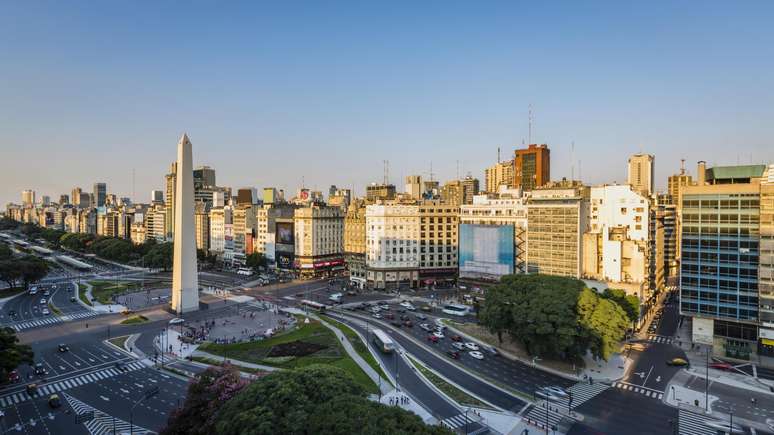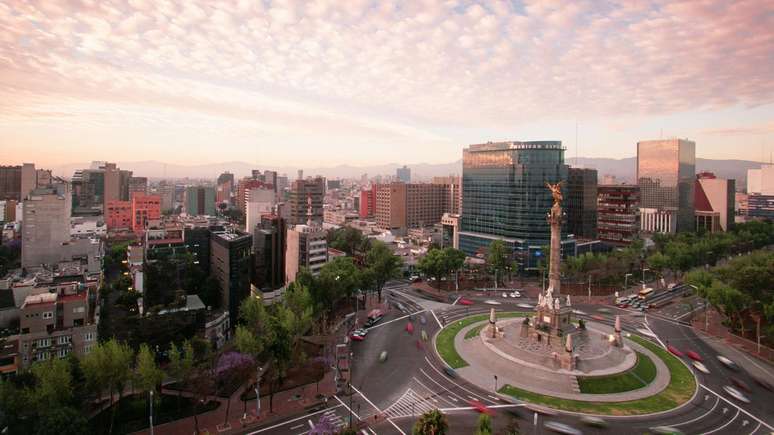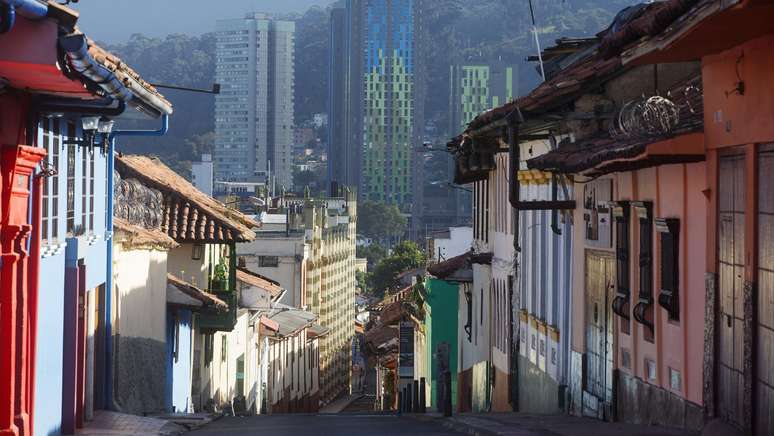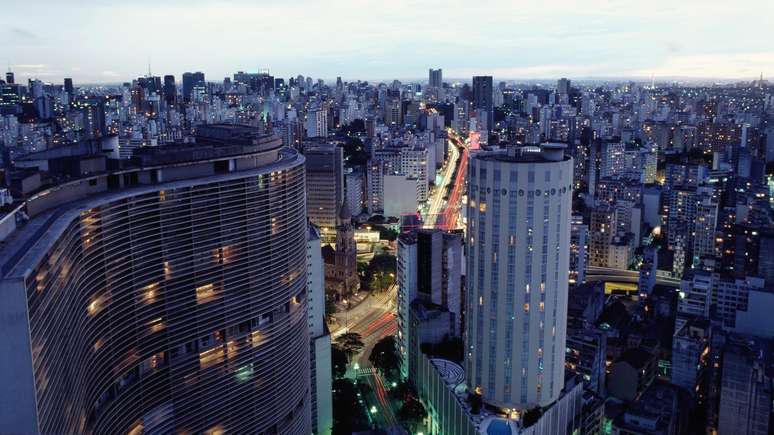Since it is very expensive to buy a house due to the frantic increase in interest rates, many prefer to rent a house, which increases the rental price. But this increase is not the same everywhere.
For many people in Latin America it is not easy to find a house to rent due to the increase in prices.
With the wave of global inflation, wages have lost purchasing power, while the cost of credit has reached record levels.
Since it is very expensive to buy a house due to the frantic increase in interest rates, many prefer to rent a house, which increases the rental price.
This upward trend began towards the end of the covid-19 pandemic, but the largest increases occurred in 2022.
“Part of the price increase is explained as a recovery after their decline during the pandemic,” Vinicius Oike, an analyst at Grupo QuintoAndar, told BBC News Mundo, the BBC’s Spanish-language service.
“Prices have risen and fallen in the shape of the letter U,” he says.
But there are cities, he stresses, where values have risen far beyond a simple recovery.
According to data collected by the rental site QuintoAndar, considering the prices announced on online platforms, between March 2022 and March 2023 the average cost of renting an apartment in Buenos Aires increased by 126%; 12% in Mexico City; 11.2% in São Paulo, 10.9% in Quito and Panama City, and 6.3% in Lima.
Buenos Aires: “It’s the law of the jungle”

With an annual inflation of almost 109%, Argentina is the most affected country in the Southern Cone.
“It’s very difficult for me to pay the rent,” says Paula Serenelli, a 35-year-old head of the family who lives with her son in Villa Lugano in Buenos Aires.
“Last year they raised the rent by 90% and this year there could be another bigger increase. It’s outrageous.”
Something similar happened to Gastón Levy, 38, who lives in Palermo, a high-income area of Buenos Aires where it is not uncommon for rents to outpace rising inflation.
“They were up 87%, which is good when you look at the index relative to inflation, which was higher,” he says. “But other people get an average 60% raise every six months.”
Although there is a law that regulates the rental market, “it doesn’t work in practice,” says Gervasio Muñoz, president of the Tenants’ Association. “Rentals in Argentina work according to the law of the jungle.”
Experts predict that while inflation in the country won’t come down, neither will rental prices in Buenos Aires.
Elsewhere in the region’s major economies, rising inflation is hitting households hard, but far from the dramatic levels experienced by Argentina.
Mexico City: ‘I’m looking for a rental and it’s difficult’

In Mexico, where inflation fluctuates around 10%, the price of rents in the capital follows a trend similar to or slightly higher than the general increase in the cost of living.
“The rents have been readjusted between 10% and 15% on average,” says Leonardo González, real estate analyst at the company propiedades.com, referring to the increase in values.
According to González, the price increase is explained by the general increase in inflation, lower demand for home loans (which causes more people to look to rent), and a growing preference for places with more space for a home office .
In specific neighborhoods of Mexico City, where people with greater purchasing power live, rent increases have reached 40%, says the expert.
This escalation is linked to the arrival of “digital nomads” who, in many cases, receive salaries in dollars.
The more central neighborhoods are “gentrifying,” says Óscar García, who lives in Colonia del Valle and whose rent on his apartment has increased by 30%.
“I’m looking to rent and it’s tough,” she says. “A lot of foreigners have come who can pay high prices, and there are houses that are rented exclusively through Airbnb.”
Expert projections suggest that rental prices in Mexico City will continue to rise.
“The year 2023 will be characterized by an upward trend in prices. We expect an average increase of 12%,” says González, noting that the index can also vary depending on the country’s general inflation.
In other Latin American capitals, increases in rental prices have been more modest.
Bogotá: lower than general inflation

When renewing rental contracts in Colombia, prices are adjusted based on the rate of inflation recorded in December of the immediately preceding year.
If this rule were respected, the increase in present values would be 13%, which was the CPI (Consumer Price Index) for December 2022.
However, in practice, many negotiations do not follow this trend.
The problem, rent addicts point out, is that landlords often lose out by lowering prices, especially when rent is critical to one’s income.
“For many people, what they get from renting is a sort of pension,” says Liliana Báez, an independent real estate agent in Bogota.
The other side of the coin is the tenants who cannot afford a 13% increase in the rental price.
Ultimately, negotiation is what defines the real price increase, says Sergio Olarte, chief economist at Scotiabank Colpatria.
Although the National Administrative Department of Statistics (Dane) has not released data on rental prices broken down by city, Olarte estimates that Bogota has followed the trend nationwide, with an increase close to 7%.
How prices will move in the future will largely depend on what happens to overall inflation in the country.
São Paulo: the micro-apartment boom
Among the megacities of Latin America is São Paulo, the largest commercial and financial center in Brazil.
In the city, the value of rentals has increased by about 11% over the past year, according to QuintoAndar.
After the pandemic, there has been something of a real estate boom in São Paulo, both in the sales and rental markets.
People, especially the younger ones, are looking for so-called micro-apartments, which can be smaller than 30 square meters and are usually built near subway stations.
These micro-apartments tend to be expensive due to their favorable location.
And, looking to the future, experts suggest that the index should continue to rise due to the lack of land available to build in the most accessible areas.
If there is little land available and high demand, the result is increased sales and rental values.
Lima: “Prices will continue to rise”

Despite the political and economic crisis that Peru is going through, prices in the rental market in Lima have not gone down.
The increase is smaller than in other Latin American cities, but the average value continues to rise, despite the large differences that exist between one neighborhood and another.
“This year all neighborhoods have higher prices than before the pandemic,” explains Luciano Barredo, marketing manager at Grupo Navent.
Analyzing the prices offered in rental advertisements, the average increase in the last year in Lima reaches 6.3%.
However, Barredo points out, the value disclosed in the announcements tends to decrease in the negotiations.
So, taking that into account, the increase in Lima is closer to 2.8%, the expert explains.
According to him, this phenomenon is influenced by factors such as general inflation – which closed last year at 8% -, the decline in home sales due to high interest rates on mortgages, the exchange rate and the uncertainty caused by the political situation in the context country.
Adding to this panorama is the fact that “in the metropolitan area of Lima there is very little land available and building materials have increased a lot since the pandemic,” says Barredo.
In this context, “it is almost impossible that prices will not continue to rise”.
Santiago: under inflation

With inflation approaching 10% in April, rental prices have not followed suit in the Chilean capital.
“Rental value has grown much less than inflation,” says Daniel Serey, head of studies at real estate portal TOCTOC.
“For people’s pockets, the square foot of rent was up 2.1%, but when you look at it from another angle, the price has really come down,” Serey says.
How can this divergence be explained? The analyst claims that in Chile many rents are fixed in relation to the rise or fall of an index called Unidad de Fomento, better known as UF.
So, “if we adjust the rental price for inflation and convert it to UF, the price actually went down by 9.5%.”
However much one looks at the numbers, the point is that in Santiago the value of rents has not risen as it is happening in other capitals.
“The rental price isn’t going up now because the housing situation is complex,” Serey says.
“The real estate market in Chile is under very strong pressure because there is a very large housing deficit. We are experiencing an explosion of informal housing, of camps,” he adds.
“The economic situation has slowed down more. Fewer people are buying homes and only have to resort to the rental market,” says the analyst.
As long as developers keep creating new designs, prices will be affordable, he added. But if the industry stops building houses at the rate it has been building so far, prices will rise.
In the case of Latin American cities where rental values have been rising rapidly, Vinicius Oike, of QuintoAndar, predicts that “the market should cool off” this year and next, as economic growth will be lower.
This will depend a lot on how the combination of growth, inflation and interest rates evolves in each country, as well as economic news that may arrive from abroad.
Source: Terra
Rose James is a Gossipify movie and series reviewer known for her in-depth analysis and unique perspective on the latest releases. With a background in film studies, she provides engaging and informative reviews, and keeps readers up to date with industry trends and emerging talents.






